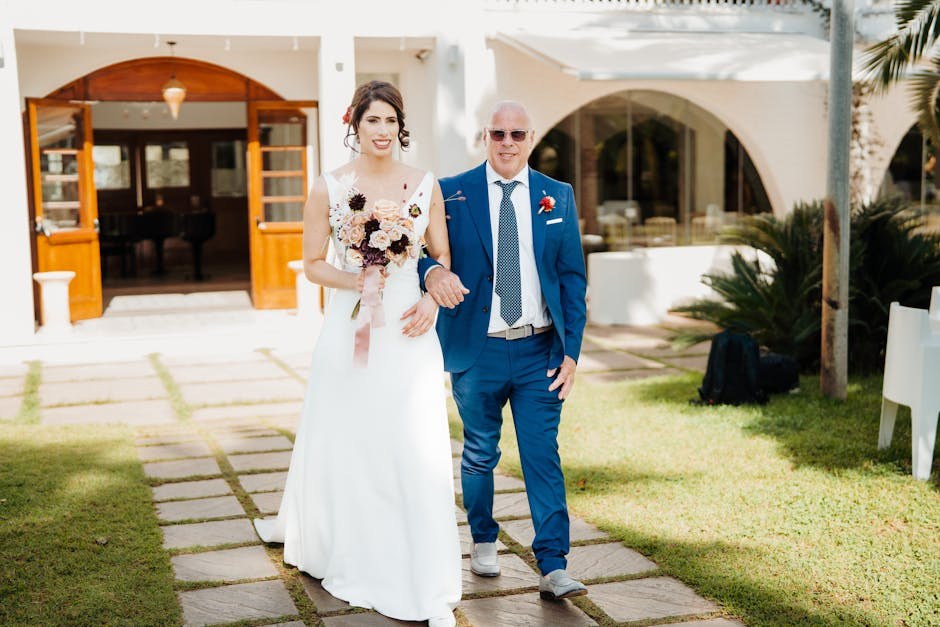Bringing up commitment can feel like walking a tightrope – you want to ask where you stand, yet you don’t want to be seen as anxious or overbearing. The good news is that it’s entirely possible to ask where you stand in a way that is calm, confident, and respectful of both your feelings and his. This guide reframes the conversation so you can ask where you stand without losing your voice, your boundaries, or your sense of self.
Rethinking the “Define the Relationship” Moment
When people talk about defining the relationship, they often picture a heavy, make-or-break event. In reality, the first time you ask where you stand is simply a check-in about alignment. You are not demanding guarantees – you are clarifying expectations. Approached this way, to ask where you stand becomes part of healthy communication rather than a dramatic ultimatum. It’s a way to compare the pace you are comfortable with, the level of exclusivity you prefer, and the direction you both imagine going.
This conversation doesn’t always end with labels or exclusivity. Sometimes you ask where you stand to understand whether you are casual companions, exploring chemistry, or moving into a committed partnership. Sometimes it reveals you’re not on the same page – which, while uncomfortable, still provides valuable clarity. Either way, when you ask where you stand, you reduce confusion, lower anxiety, and make space for informed choices.

What “Defining It” Actually Covers
If you’ve hesitated to ask where you stand because it seems complex, breaking it into simple themes helps. You might discuss whether you are seeing other people, what kind of contact feels good, how frequently you want to see each other, and what commitment means to both of you right now. The goal is not to script the future – it’s to establish a shared understanding for the present.
Asking whether exclusivity is on the table is part of this, as is talking about boundaries that protect your emotional and physical well-being. When you ask where you stand and include boundaries, you communicate self-respect: you are willing to build something real, and you also know how to care for yourself.
Why This Conversation Matters
When friends start asking, “So…what are you two?” that’s a sign it may be time to ask where you stand. Even if you’re happy with how things feel today, an honest check-in can prevent mismatched expectations later. Think of it as relationship maintenance – much like changing the oil before the engine light comes on.

There’s also a practical benefit: when you ask where you stand, it becomes easier to navigate sticky moments down the road. You’ll have practiced saying what you need and hearing what he needs. That practice pays off when difficult topics arise, because you’ve already set a tone of candor and kindness.
The Stories We Tell Ourselves – and How to Rewrite Them
Popular culture conditions many of us to fear this talk. We’re told that to ask where you stand makes you “needy,” that it drives men away, that the cool approach is to float along and hope for the best. Those scripts are outdated. Confidence is not silence; confidence is being able to ask where you stand with openness and poise. If someone interprets your clarity as pressure, that tells you something crucial about compatibility.
Another common story is that all men avoid commitment. That sweeping idea keeps people quiet – and silence postpones the truth. The reality is more nuanced. Some people are cautious, some are enthusiastic, and most are somewhere in between. The only way to find out is to ask where you stand and listen to the answer, even if it isn’t the one you hoped for.

Many fall into a cycle of almost-relationships: the routines of a couple without the language of one. Affection is there, but so is uncertainty. Each day you hesitate to ask where you stand, the ambiguity grows roots. Breaking that pattern begins with a simple, steady conversation that centers your worth and your boundaries.
Build Your Center Before You Speak
It’s easier to ask where you stand when you’ve already done some quiet inner work. You’re not chasing reassurance – you’re expressing your values. Grounding yourself first allows you to approach the talk with warmth rather than worry.
Clarify your needs. Write down what would make you feel safe and respected. When you later ask where you stand, you’ll be clear about what you’re asking for.
Accept all possible outcomes. The courage to ask where you stand includes the courage to hear “not yet” or “not the same vision.” Remind yourself that honesty saves time and heartache.
Choose compassion. You can ask where you stand firmly and still be kind. Kindness and clarity are not opposites – they are allies.
When this inner foundation is in place, the language you choose will naturally sound balanced. You will be able to ask where you stand without apologizing for having feelings or pretending you don’t care.
How to Start the Conversation
Set yourself up for success by picking a context that supports calm discussion – a quiet walk, a relaxed coffee, a peaceful evening at home. Text can be useful for logistics, but to ask where you stand effectively, aim for real-time conversation so tone and body language can support you.
Open with presence. Begin with a gentle frame: “I’ve really enjoyed getting to know you, and I want to check in about how we’re approaching this.” This signals that you want connection, not confrontation. It lets you ask where you stand without a spike of tension.
Share your experience. Describe how things feel to you: “I’m happiest when we’re intentional about what this is.” Speaking from your perspective keeps the door open and helps you ask where you stand without blame.
Ask a clear question. Try something simple: “How do you see this right now?” or “Are you open to being exclusive?” Directness is respectful – it proves you can ask where you stand in plain language.
Listen fully. Allow silence. People often need a moment to find precise words. When you ask where you stand, the answer matters more than the speed of it.
Reflect and respond. Paraphrase what you heard: “So it sounds like you’re interested in continuing but want to take it slowly.” This shows care and keeps the path open to ask where you stand again later if needed.
Language That Keeps Things Light and Clear
If your stomach tightens at the thought of the first sentence, having a few phrases ready can help. The goal is a tone that is warm, candid, and grounded. You can ask where you stand with wording like:
“I’m enjoying our time and want to make sure we’re aligned – can we talk about what we both want?”
“We’ve been spending more time together, and I’m curious how you’re seeing this.”
“I value clarity. Would you be open to being exclusive?”
“I care about you and about my boundaries – can we set some together?”
Each sentence is simple, but each allows you to ask where you stand without sounding reactive. They place your needs alongside his, not above them.
If He Avoids the Topic
Sometimes you ask where you stand and get a shrug, a joke, or a quick pivot to something else. Avoidance is feedback. It doesn’t make anyone a villain, but it does reveal readiness. If he dodges the conversation, notice it. You might pause and say, “I’m sensing hesitation. Is this a conversation you want to have?” That question alone reaffirms your dignity – you asked where you stand, and now you’re respecting your time.
If the answer remains vague, you can state your truth kindly: “I’m looking for clarity and care. If this isn’t something you want to define, I’ll step back.” It’s steady, not severe. This is how you ask where you stand and also honor the answer, even when it’s not your preferred one.
Respecting Every Outcome
When responses differ – one person wants exclusivity, the other prefers open exploration – the most respectful move is to acknowledge the difference. You can appreciate the connection while choosing what protects your heart. To ask where you stand is to invite a choice; to act on the answer is to practice self-respect.
Staying True to Yourself During the Talk
It helps to plan the conversation, not to script it word for word, but to keep you anchored. A few commitments to yourself can keep things steady when you ask where you stand:
Hold your boundary. Know what “yes,” “not yet,” and “no” look like for you. When you ask where you stand, you’re also telling yourself you matter. If your lines are crossed, you can say so and step away.
Skip the pressure. You can express what you want without insisting on an immediate label. Asking “What would feel right for both of us over the next few weeks?” keeps momentum while you ask where you stand.
Be honest about desire. If commitment is important to you, name it. Authenticity is attractive. It’s entirely possible to ask where you stand and also say, with a smile, that you’re looking for something intentional.
Remember that you are not responsible for anyone else’s pace. Your responsibility is to express your own. When you ask where you stand with kindness and clarity, you are already modeling the kind of partnership you hope to build.
Practices That Make the Conversation Easier
There are simple habits that make this dialogue flow. They won’t guarantee the outcome, but they will help you ask where you stand with poise.
Choose timing wisely. Not right before a stressful deadline, not during a party – opt for a calm, private moment. Good timing lets you ask where you stand without escalation.
Use “I” statements. “I feel closest when we’re intentional,” “I’d like to be exclusive,” “I want to know if we’re aiming for partnership.” Owning your experience softens the edges as you ask where you stand.
Invite his perspective. Curiosity beats interrogation. “What feels good to you right now?” is a generous way to ask where you stand together.
Keep your nervous system calm. Breathe slowly, relax your shoulders, and speak a touch more slowly than usual. A calm voice communicates, “I can ask where you stand and be okay with the answer.”
Affirm what’s working. Appreciating the good doesn’t weaken your boundary. “I love how easy our conversations are” pairs beautifully with asking where you stand about next steps.
When the Answer Is “Yes,” “Not Yet,” or “No”
Three broad responses tend to appear, and each one guides your next step.
If It’s a Clear “Yes”
Celebrate thoughtfully. You asked where you stand, you were heard, and you agreed on a direction. Now make your agreement practical: talk about exclusivity, communication habits, and what support looks like. You can even set a future check-in to ask where you stand again after some time – not because you doubt the bond, but because you value continued clarity.
If It’s a Thoughtful “Not Yet”
Sometimes the connection is promising, but the timing is tender. If he says he wants to keep building but prefers to move slower, you get to decide whether that pace respects your needs. You might suggest short-term agreements – such as seeing each other consistently while you both reflect – and choose a date to ask where you stand again. If the “not yet” becomes a pattern without movement, that’s information too.
If It’s a Genuine “No”
It stings, and it’s honest. In the long run, a sincere “no” is an act of respect – it frees you to find a partner who matches your vision. You asked where you stand and you listened. Honor yourself by taking space, leaning on community, and remembering that clarity is a gift. You can quietly affirm, “I’m glad I asked where I stand; now I can move forward.”
Common Pitfalls – and Better Alternatives
Even the bravest among us slip into habits that cloud the talk. Here are patterns to avoid and what to try instead so you can ask where you stand with grace.
Hinting instead of asking. Hints create guesswork. Replace them with a direct, gentle question. You deserve to ask where you stand in clear daylight.
Interrogation mode. Firing off rapid-fire questions makes anyone defensive. Trade a barrage for shared reflection, and you’ll ask where you stand without elevating the stakes.
Downplaying your needs. Saying “It’s whatever” when it isn’t confuses both of you. Courage is to ask where you stand and own what you want.
Making demands. Ultimatums create resistance. Boundaries, on the other hand, are about what you will do. “If we’re not defining this, I’ll step back” is a boundary; it lets you ask where you stand while respecting autonomy.
Keeping the Door Open for Future Check-Ins
Healthy relationships evolve. What felt right at the start may change as intimacy deepens. Normalizing periodic check-ins makes it easy to ask where you stand again later. These don’t need to be heavy – think of them as tune-ups. “How are we doing?” is small talk with substance.
You can even create a ritual: after a month of consistent connection, take a walk and ask where you stand; after meeting each other’s friends, ask where you stand again; after navigating a challenge well, ask where you stand to celebrate how you handled it. Repetition doesn’t signal insecurity – it signals care.
Confidence, Compassion, and Choice
At the heart of all this is self-trust. You are allowed to want clarity. You are allowed to protect your energy. You are allowed to ask where you stand and to make choices based on the answer. Speak with warmth, listen with curiosity, and let the truth guide you. If you want a mantra, try this: “I can ask where I stand with kindness, I can hear the answer with courage, and I can act with integrity.” Place a hand over your heart, breathe, and – if it helps – whisper be brave before you begin.
When you choose clarity, you choose yourself. And when you ask where you stand with an open mind, you invite the kind of relationship that thrives on honesty – the only kind worth building.